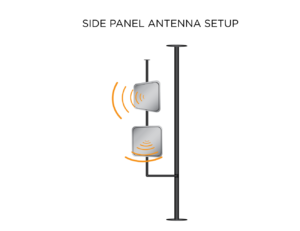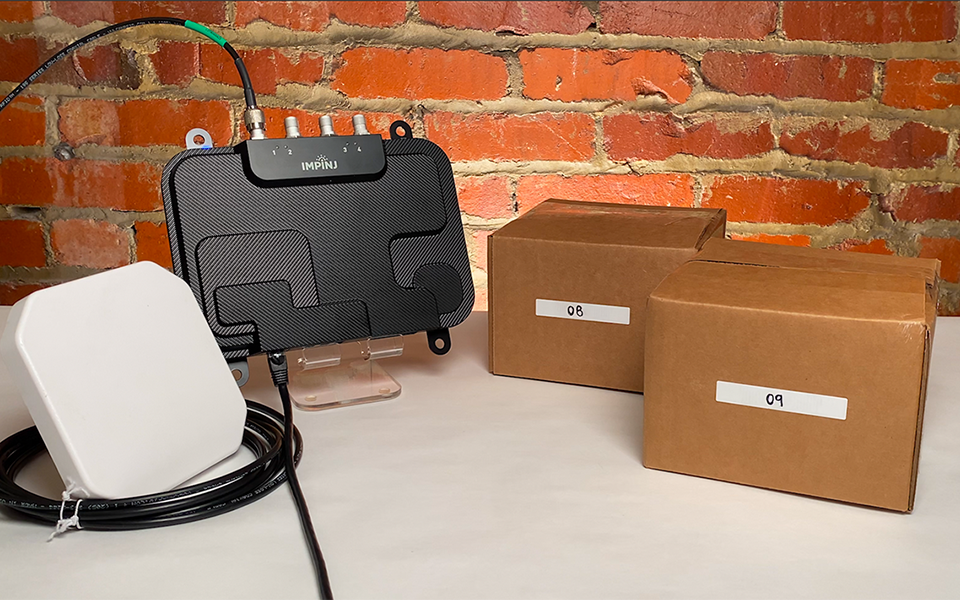How To Track Vehicles with RFID
This blog post is designed to be a general how-to get started with vehicle tracking. If you have more detailed questions about this application, please contact us.
Mobile and made of metal and glass, vehicles require a little more planning for RFID tag and equipment setup than some other applications. Before getting into the how-to of the setup, let’s first address the three main reasons vehicles are tracked using RFID.
Why Use RFID Vehicle Tracking?
Three of the most popular reasons to use RFID with vehicles are access control, vehicle identification, and vehicle tracking.
Access Control – The ability to allow or deny access based on a vehicle having a specific RFID tag is a valuable way to provide a building or parking lot an enhanced level of security. These systems keep out unauthorized vehicles that would otherwise take up space and deter individuals from entering a secure building or lot. Thousands of RFID vehicle access control applications are operative in apartment/housing complexes, secure parking lots, construction yards, etc.
Vehicle Identification – The ability to identify a vehicle and access information about it by reading its RFID tag is beneficial for companies like car rental agencies, car dealerships, and even car wash facilities. Even car manufacturers, like Audi, are starting to use RFID to track a vehicle through the manufacturing process. Take a look at our page full of information, infographics, and more about automotive manufacturing and RFID.
With the addition of software, these companies can pull up car records or purchases by just reading the car’s unique RFID tag. Rental companies and dealerships could have several cars on the lot that are nearly identical, so the unique RFID tag provides them with vehicle identification without trying to find and compare multiple VINs. Car washes (and other companies using car servicing as a business model) can use RFID to uniquely identify cars to enhance loyalty programs and automate transactions. Additionally, states and localities use RFID systems to automate tolling charges and keep traffic flowing more smoothly for those participating in the program.
Vehicle Tracking – Tracking a vehicle while it is traveling hundreds or thousands of miles is not a capability of UHF RFID; but, if checkpoints are set up along the route, the location of the vehicle can be estimated based on when it passes each one. This is being done throughout the nation at large truck weigh stations along major interstates. When 18-wheelers are weighed, their RFID tags are read to pinpoint location and can also be used to document the journey. For companies or persons interested in tracking vehicles in real-time and without setting up expensive infrastructure, vehicle GPS tags are a better solution.
How-To: Tag a Vehicle
Using an RFID tag manufactured specifically for vehicle tracking quickly narrows down the available options. The next step is to decide where the tag will be located on the vehicle. This will be dependent on where the equipment is set up and at what angle the tag receives the best read rates. Below are the three most common types of vehicle tags (grouped by where they are placed), and a little information about each.
RFID Windshield Tags – Windshield tags are distinguished by their ability to adhere to the vehicle’s windshield with a permanent (destroyed upon removal) or semi-permanent adhesive. This type of tag is tuned to work best on glass and is placed in the top right or left of the inside of the windshield. These tags usually have around 20 feet of read range in ideal conditions, and are best read with equipment overhead or to the side nearest to the tag with the antennas angled toward the vehicle.
RFID Hang Tags/Rearview Mirror Tags – Hang tags, also called Rearview Mirror tags are unique because they do not adhere or make contact with the vehicle; instead, they hang from the vehicle’s rear-view mirror. The key benefit to this tag is that it is not as permanent as the other two options and can be removed and stored when not in use. These tags can read up to 20 feet in ideal conditions from equipment overhead or to either side with the antennas angled towards the vehicle.
RFID License Plate Tags – License plate tags are more common in longer range applications because they can read up to 50 feet in ideal conditions. These tags are adhered or mounted on the license plate on the back of the vehicle and are read when the car is moving away from the RFID equipment instead of coming toward it. This directionality will affect the setup of the application because the antennas will need to be angled away from the vehicle to read the tag when it is moving past the equipment. The downside of using RFID license plate tags comes from the fact that the RFID tags lie on the outside of the vehicle; thus, they are more susceptible to damage and potentially being stolen.
How-To: Setup the RFID Vehicle Tracking System Equipment
Of note, this section will be the most general section because of the varying application types, environments, tag types, etc. For most vehicle tracking applications, two equipment setups are recommended: a truss setup above the vehicle, or a side panel setup either on the right or left of the vehicle, depending on tag placement.

Truss Setup (above) – Many car washes, tolling applications, and vehicle tracking applications use equipment setup overhead to read tags in the front or rear of the car, depending on how the antennas are angled. Panel antennas can be mounted on the truss and angled toward or away from vehicles going through. Antennas angled toward the entering vehicles can read RFID windshield or hang tags, while antennas angled away from entering vehicles can read RFID license plate tags.

Side Panel Setup (left and/or right) – Ideal for access control applications and car dealerships, mounting antennas on poles or structures on either side of the vehicle works well to read windshield or hang tags. This setup can also be directed away from the entering vehicle to read license plate tags, or several antennas can be mounted and angled in different directions. Setting up antennas on posts to the left or the right of the vehicle will provide this application with consistent readings if the equipment is set up correctly.
Testing – Testing these setups with different tags, antennas, antenna angles, and reader transmit power is the ideal way to find what works best for each environment. For more information on the various factors that affect read range, please see the blog post 6 Factors that Affect RFID Read Range.
Common RFID Vehicle Tracking Questions
How fast can a tagged vehicle pass by the RFID equipment and still be read?
This depends on the type of application, the environment, and type of RFID equipment being used. Tolling applications have been reported to be able to read cars at speeds of 60+ mph. For more information on high-speed applications, check out our blog post RFID in Motion: High-Speed Applications.
What is the typical read range for RFID vehicle tracking?
Tagging with RFID windshield tags and hang tags usually nets about 10 – 20 feet average read range, but the range depends heavily on the tag selected. Because license plate tags are typically larger than windshield or hang tags, they can read between 10 - 50 feet away, depending on the tag.
Some applications may require shorter read ranges to reduce stray reads of other vehicles in the area. For applications like access control and vehicle identification, it could be detrimental to have too much read range because other cars could open a gate for non-authorized vehicles, or the wrong vehicle could be identified. Choose a tag with an average read range and then adjust the reader transmit power to get a well-structured read zone.
What do I need to consider if my application is outdoors?
Because most vehicle tracking applications will be outdoors, a rating of IP68 or IP69 for the readers and antenna(s) is necessary. If the reader is not rated for outdoor use (few are), then a weatherproof enclosure can be used to protect it.
In Conclusion: RFID Vehicle Tracking
RFID vehicle tracking offers a reliable and efficient solution for monitoring and managing fleet operations with precision. By providing real-time visibility, automated data collection, and enhanced security, businesses can streamline logistics, reduce operational costs, and improve overall efficiency. Implementing RFID technology ensures smarter fleet management, enabling organizations to optimize performance, enhance safety, and stay ahead in a competitive landscape. If you have any additional questions about tracking vehicles using RFID or GPS, comment below or contact us for more information.
If you would like to learn more about all things RFID, check out our website or our YouTube channel.



